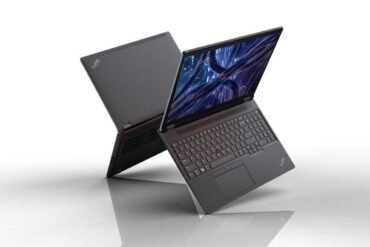Exploring RAM RGB Ecosystem Compatibility
Table of Contents
Introduction to RAM RGB Ecosystems
As technology continues to advance, the aesthetics of computer components have become a major consideration for many PC enthusiasts. One such component that has witnessed significant improvements in visual appeal is Random Access Memory (RAM). In recent years, RAM modules with RGB lighting have gained immense popularity among gamers and PC builders, taking customization to a whole new level.
RAM RGB ecosystems refer to the compatibility and integration between RAM modules and software-controlled RGB lighting systems. These ecosystems allow users to synchronize the RGB lighting effects of their RAM modules with other components, such as motherboards, graphics cards, and fans, creating a harmonious and visually stunning lighting experience.
One of the key advantages of RAM RGB ecosystems is the ability to customize and personalize the lighting effects according to individual preferences. With the help of dedicated software or motherboard RGB control systems, users can choose from a wide range of colors, lighting patterns, and effects. This level of customization allows users to create unique lighting setups that match their overall system theme or gaming setup.
Furthermore, RAM RGB ecosystems often provide seamless integration with popular lighting control software, such as ASUS Aura Sync, MSI Mystic Light, or Gigabyte RGB Fusion. These software packages enable users to control and synchronize the RGB lighting effects of multiple components, including RAM, through a single interface. This simplifies the customization process and ensures that all RGB components work together cohesively.
It is important to note that not all RAM modules support RGB lighting. Therefore, when building a PC with RGB lighting in mind, it is crucial to choose RAM modules specifically designed for RGB functionality. Additionally, compatibility between different RAM RGB ecosystems can vary, so it is essential to ensure that the chosen RAM modules are compatible with the lighting control software or motherboard RGB control system being used.
In conclusion, RAM RGB ecosystems have revolutionized the way PC enthusiasts and gamers approach system aesthetics. With the ability to synchronize and customize RGB lighting effects, these ecosystems provide an immersive and visually appealing experience. When building a PC with RGB lighting, it is essential to select compatible RAM modules and ensure integration with the desired RGB control software or motherboard RGB control system.
Understanding Compatibility Factors
When it comes to exploring the RAM RGB ecosystem, understanding compatibility factors is crucial. The RGB (Red, Green, Blue) lighting technology has gained immense popularity in the gaming community, allowing users to customize their PC setups with vibrant colors and lighting effects. However, not all components and software are compatible with each other, which can cause frustration and confusion for users. To help you navigate through the compatibility maze, here are some key factors to consider:
- Manufacturer Compatibility: Different RAM manufacturers often have their own RGB lighting systems and software. It is essential to ensure that the RAM you choose is compatible with the RGB ecosystem you intend to use. Make sure to check the manufacturer’s website or product specifications for compatibility information.
- Motherboard Compatibility: The motherboard plays a crucial role in the compatibility of RGB RAM. Not all motherboards have RGB headers or support the same RGB software. It is important to check your motherboard’s specifications to ensure it supports the RGB ecosystem you plan to use. Additionally, some motherboards may have limitations on the number of RGB RAM modules they can accommodate.
- Software Compatibility: RGB RAM often requires dedicated software to control the lighting effects. However, not all software is compatible with all RGB RAM modules. It is crucial to check if the software provided by the RAM manufacturer is compatible with your motherboard and other RGB components you plan to use.
- Synchronization Compatibility: If you have multiple RGB components in your PC setup, such as RGB fans or RGB strips, synchronization is important to create a cohesive lighting effect. Some RGB ecosystems offer synchronization features, allowing you to control all your RGB components from a single software interface. Make sure to check if the RGB RAM you choose is compatible with the synchronization feature of your chosen RGB ecosystem.
- Power Supply Compatibility: RGB RAM modules often require additional power to operate the lighting. Ensure that your power supply unit has the necessary connectors to provide power to the RGB RAM modules. Some RGB RAM modules may require additional cables or connectors, so it’s important to check the manufacturer’s specifications.
By considering these compatibility factors, you can ensure a seamless integration of RGB RAM into your PC setup. Always double-check the compatibility information provided by the manufacturers and refer to user reviews or forums for real-world experiences. With the right compatibility, you can create a stunning RGB lighting setup that enhances your gaming experience.
Top RAM Brands and RGB Software
When it comes to RGB (Red, Green, Blue) lighting in computer systems, RAM modules have become an integral part of the customization experience. Many renowned RAM brands have recognized the demand for RGB lighting and have developed their own software to control and synchronize the lighting effects. Here are some of the top RAM brands and their RGB software:
- Corsair: Corsair offers the powerful iCUE software, which allows users to control RGB lighting across different Corsair components, including RAM modules. With iCUE, users can create custom lighting profiles, synchronize lighting effects with other Corsair devices, and even integrate third-party software for a unified lighting experience.
- G.Skill: G.Skill’s Trident Z RGB series comes with its own software called Trident Z Lighting Control. This software enables users to customize lighting effects, adjust brightness, and synchronize the RGB lighting with other compatible components. While it may not be as feature-rich as some other software, it still offers a decent level of customization.
- TeamGroup: TeamGroup’s T-Force RAM modules are known for their vibrant RGB lighting. To control the RGB effects, TeamGroup provides the T-Force Blitz software. With T-Force Blitz, users can create unique lighting patterns, adjust colors, and sync the lighting with other compatible components.
- ADATA: ADATA’s XPG RAM modules feature customizable RGB lighting. The company’s software, XPG RGB Sync, allows users to personalize the lighting effects, adjust brightness, and synchronize the RGB lighting with other XPG products for a visually stunning setup.
These are just a few examples of the top RAM brands and their RGB software offerings. It’s essential to check compatibility with your specific RAM modules and other components before diving into the RGB ecosystem. Remember to download the latest software versions from the respective brand websites to ensure a seamless experience and access to the latest features.
Troubleshooting Common Compatibility Issues
If you are experiencing compatibility issues with your RAM RGB ecosystem, don’t worry! Here are some common problems and their solutions:
- RAM not lighting up: Make sure that your RAM modules are properly installed in the correct slots. Check the motherboard manual for guidance. Also, ensure that the RGB lighting is enabled in your motherboard’s BIOS settings.
- Inconsistent lighting effects: If the RGB lighting on your RAM modules is not synchronized or displaying different effects, it may be due to incompatible software. Ensure that you are using the latest version of the RGB control software provided by the RAM manufacturer. You may also need to update your motherboard’s RGB software or firmware.
- Conflicts with other RGB components: If you have other RGB components in your system, such as fans or CPU coolers, there may be conflicts between their control software and the RAM RGB ecosystem. In such cases, try using a unified RGB control software that supports multiple devices. Consult the manufacturer’s website for compatibility information.
- Unresponsive RGB control software: If the RGB control software is not working properly or crashing frequently, try reinstalling the software or updating it to the latest version. Check the manufacturer’s support website for any known issues or troubleshooting guides. You can also try resetting the RGB lighting settings to default in the software.
- Incompatible motherboard: It is essential to ensure that your motherboard supports RGB lighting and is compatible with the RAM RGB ecosystem you are using. Check the motherboard’s specifications and compatibility list provided by the RAM manufacturer. Upgrading your motherboard may be necessary if it lacks RGB lighting support.
By following these troubleshooting steps, you should be able to resolve most compatibility issues with your RAM RGB ecosystem. Remember to always refer to the manufacturer’s documentation and support channels for specific guidance related to your hardware and software setup.
Future Trends and Innovations
The world of computer hardware and gaming peripherals is constantly evolving, with new trends and innovations shaping the way we experience technology. As we explore the compatibility within the RAM RGB ecosystem, it’s important to consider the future developments that could revolutionize this space. Here are some emerging trends to watch out for:
- Enhanced Customization: With the growing demand for personalized gaming setups, RAM RGB ecosystem manufacturers are focusing on providing users with more customization options. In the future, we can expect even more advanced lighting effects and software controls to tailor the RGB experience to individual preferences.
- Integration with AI and Machine Learning: Artificial intelligence and machine learning technologies are permeating various industries, and the RAM RGB ecosystem is no exception. Manufacturers are exploring ways to incorporate these technologies to automatically adjust lighting effects based on user behavior or game-specific profiles.
- Syncing with Smart Home Devices: As smart home technology continues to gain popularity, integrating RAM RGB ecosystems with smart home devices could be the next big thing. Imagine your RAM RGB lighting syncing with your smart lights, music, or even virtual assistants, creating an immersive and synchronized gaming environment.
- Wireless Connectivity: As wireless technology becomes more advanced and reliable, we might see RAM RGB components adopting wireless connectivity options. This would eliminate the need for cables and provide more flexibility in terms of placement and setup.
- Eco-friendly Solutions: With sustainability becoming a global concern, manufacturers are increasingly focusing on developing eco-friendly solutions. Future innovations in the RAM RGB ecosystem could include more energy-efficient components and recyclable materials, reducing the environmental impact of these products.
As technology continues to advance, the RAM RGB ecosystem will undoubtedly evolve to meet the demands of gamers and PC enthusiasts. By keeping an eye on these future trends and innovations, we can expect an even more immersive and customizable RGB experience in the years to come.


























